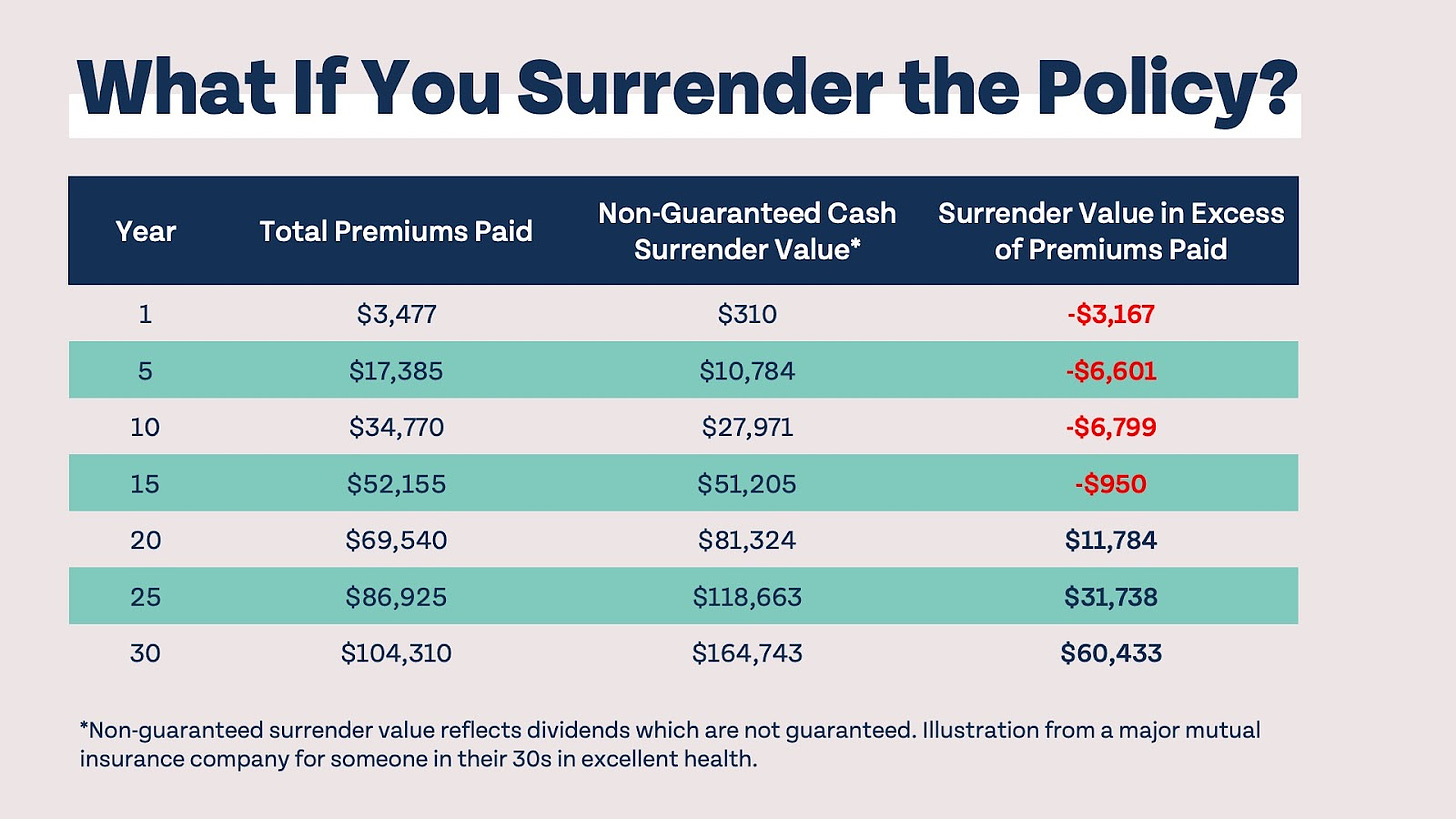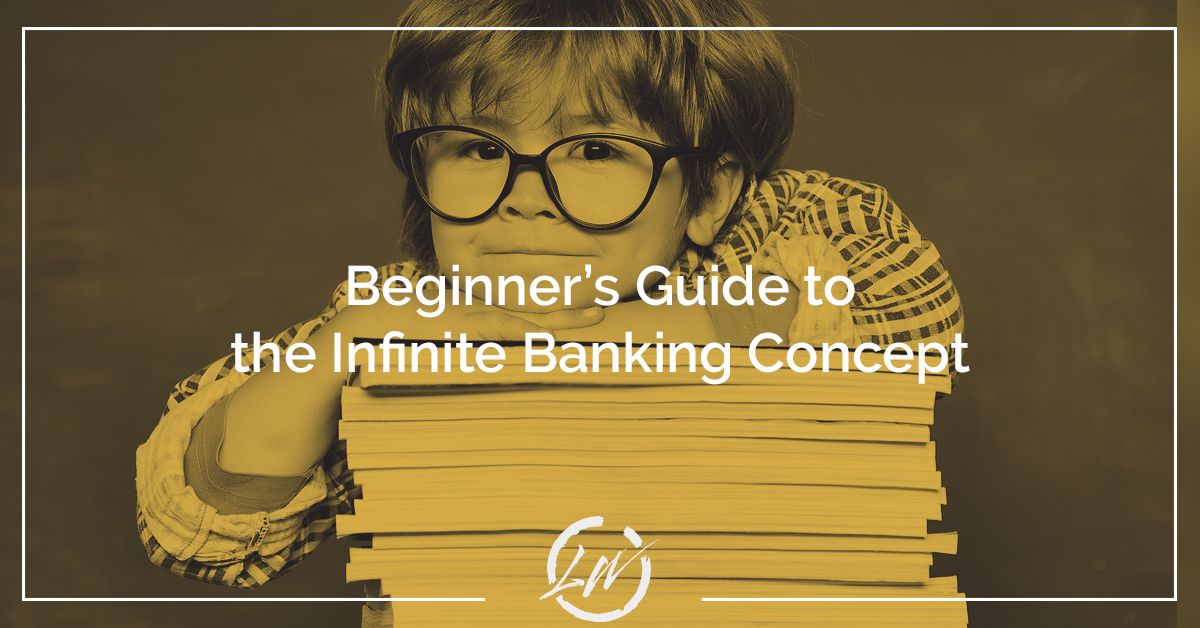All Categories
Featured
Table of Contents
Okay, to be fair you're truly "financial with an insurance coverage company" instead of "financial on yourself", but that principle is not as very easy to offer. Why the term "infinite" banking? The concept is to have your cash operating in multiple areas at when, as opposed to in a single location. It's a little bit like the concept of getting a home with money, then obtaining versus the house and placing the money to operate in one more financial investment.
Some people like to speak regarding the "speed of money", which basically means the exact same thing. That does not imply there is absolutely nothing worthwhile to this concept once you get past the advertising.
The entire life insurance policy industry is tormented by extremely costly insurance coverage, huge commissions, shady sales methods, reduced rates of return, and poorly enlightened clients and salespeople. If you want to "Bank on Yourself", you're going to have to wade into this sector and really acquire entire life insurance. There is no substitute.
The assurances inherent in this product are vital to its feature. You can borrow versus many sorts of cash money worth life insurance policy, yet you should not "financial institution" with them. As you acquire a whole life insurance policy policy to "bank" with, keep in mind that this is a totally different section of your monetary plan from the life insurance coverage section.
Get a large fat term life insurance policy policy to do that. As you will certainly see below, your "Infinite Financial" policy really is not going to dependably offer this important economic feature. Another problem with the truth that IB/BOY/LEAP depends, at its core, on an entire life plan is that it can make acquiring a plan problematic for a number of those curious about doing so.
Infinite Banking Wiki
Hazardous hobbies such as diving, rock climbing, sky diving, or flying likewise do not mix well with life insurance policy products. The IB/BOY/LEAP advocates (salesmen?) have a workaround for youbuy the policy on somebody else! That might function out great, since the point of the plan is not the fatality advantage, yet remember that purchasing a policy on minor kids is much more expensive than it should be since they are typically underwritten at a "basic" price as opposed to a chosen one.

A lot of policies are structured to do one of two things. The commission on a whole life insurance plan is 50-110% of the very first year's costs. Often policies are structured to optimize the fatality advantage for the premiums paid.
With an IB/BOY/LEAP plan, your objective is not to take full advantage of the death advantage per dollar in costs paid. Your objective is to take full advantage of the money value per buck in costs paid. The price of return on the plan is extremely crucial. Among the most effective means to optimize that element is to obtain as much cash as possible into the plan.
The ideal method to boost the rate of return of a policy is to have a relatively tiny "base plan", and after that put even more money into it with "paid-up enhancements". As opposed to asking "How little can I place in to obtain a certain fatality advantage?" the question becomes "Just how much can I legally took into the plan?" With even more money in the plan, there is even more cash money value left after the expenses of the survivor benefit are paid.
A fringe benefit of a paid-up addition over a regular costs is that the commission rate is lower (like 3-4% instead of 50-110%) on paid-up enhancements than the base policy. The less you pay in commission, the higher your rate of return. The rate of return on your money value is still mosting likely to be adverse for a while, like all cash worth insurance coverage.
Yet it is not interest-free. As a matter of fact, it might set you back as much as 8%. Many insurance coverage companies just use "direct acknowledgment" lendings. With a straight recognition car loan, if you obtain out $50K, the reward price related to the cash money value each year just relates to the $150K left in the policy.
Infinite Banking Spreadsheet
With a non-direct acknowledgment funding, the firm still pays the same returns, whether you have "obtained the cash out" (practically versus) the policy or not. Crazy? Why would certainly they do that? Who knows? They do. Typically this attribute is matched with some much less helpful element of the plan, such as a lower reward rate than you could get from a plan with straight recognition fundings (infinite banking calculator).
The companies do not have a resource of magic complimentary money, so what they give up one area in the policy should be taken from one more place. If it is taken from a feature you care much less about and put into an attribute you care extra around, that is a great point for you.
There is another crucial feature, typically called "laundry fundings". While it is great to still have actually returns paid on money you have gotten of the policy, you still need to pay interest on that finance. If the dividend price is 4% and the car loan is billing 8%, you're not specifically coming out in advance.
With a wash car loan, your loan rate of interest rate is the very same as the reward rate on the policy. While you are paying 5% passion on the lending, that interest is completely offset by the 5% returns on the lending. In that respect, it acts just like you took out the cash from a bank account.

5%-5% = 0%-0%. Same exact same. Therefore, you are now "banking on yourself." Without all three of these factors, this plan just is not mosting likely to function very well for IB/BOY/LEAP. The biggest concern with IB/BOY/LEAP is the people pushing it. Nearly all of them stand to benefit from you purchasing right into this idea.
In reality, there are lots of insurance coverage representatives chatting concerning IB/BOY/LEAP as an attribute of entire life that are not really offering policies with the necessary features to do it! The trouble is that those that recognize the idea best have a massive dispute of passion and normally pump up the advantages of the concept (and the underlying policy).
Infinite Banking Concept Book
You must compare borrowing versus your policy to taking out money from your financial savings account. No cash in cash worth life insurance. You can put the cash in the financial institution, you can spend it, or you can buy an IB/BOY/LEAP policy.
It grows as the account pays interest. You pay tax obligations on the interest every year. When it comes time to get the boat, you take out the cash and purchase the boat. After that you can save some more cash and placed it back in the banking account to begin to earn passion once more.
It grows throughout the years with capital gains, rewards, rents, and so on. A few of that earnings is strained as you go along. When it comes time to acquire the watercraft, you offer the investment and pay tax obligations on your long-term capital gains. After that you can conserve some even more money and acquire some more investments.
The cash worth not used to spend for insurance policy and commissions expands for many years at the returns price without tax obligation drag. It begins with negative returns, but ideally by year 5 or two has broken also and is expanding at the reward price. When you go to acquire the boat, you obtain versus the plan tax-free.
How To Be Your Own Banker
As you pay it back, the money you paid back begins expanding again at the dividend rate. Those all job quite likewise and you can compare the after-tax rates of return. The fourth alternative, nonetheless, functions extremely differently. You do not save any cash neither purchase any type of financial investment for years.
They run your credit score and give you a loan. You pay interest on the borrowed cash to the financial institution till the funding is paid off.
Table of Contents
Latest Posts
Bank Concept
Banker Life Quotes
How To Create Your Own Bank
More
Latest Posts
Bank Concept
Banker Life Quotes
How To Create Your Own Bank